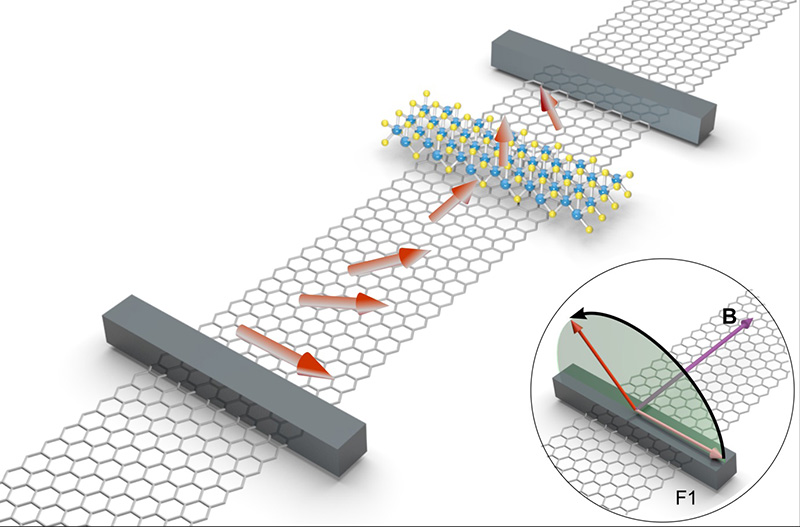Spin is the intrinsic angular momentum of subatomic particles. Although with no real equivalent in classical physics, it can be used much like charge to store, manipulate and transport information. Graphene is known to transport electron spins very effectively over large distances. However, manipulating these spins is made difficult by the lack of any means of controlling them externally. The spin-orbit coupling (SOC) interaction offers just such a means, though in graphene this must be ‘borrowed’ from other materials via the proximity effect.
ICN2 researchers have unambiguously demonstrated that SOC can be induced in graphene by proximity to transition metal dichalcogenides (TMDC). Using an experimental approach developed over the last two years by the ICN2 group, it was observed that spins behaved differently upon reaching the graphene/TMDC bilayer depending on their orientation. In-plane spins were found to be very sensitive to the proximity-induced SOC, relaxing and losing their orientation as much as 10 times faster than out-of-plane spins. This strongly anisotropic spin relaxation was further observed to be a consequence of the spin-valley coupling also imprinted onto the graphene from the TMDC.
Crucially, all observations were carried out at room temperature, making them of direct relevance to future technological applications. These results suggest that a graphene/TMDC system could be used as a spin filter, allowing the detection of small orientation changes. They also represent the first step to achieving external control over the propagation of spins in graphene, and offer an interesting starting point for the exploration of coupled spin-valley phenomena and topological and spin-valleytronics device concepts.
Reference
